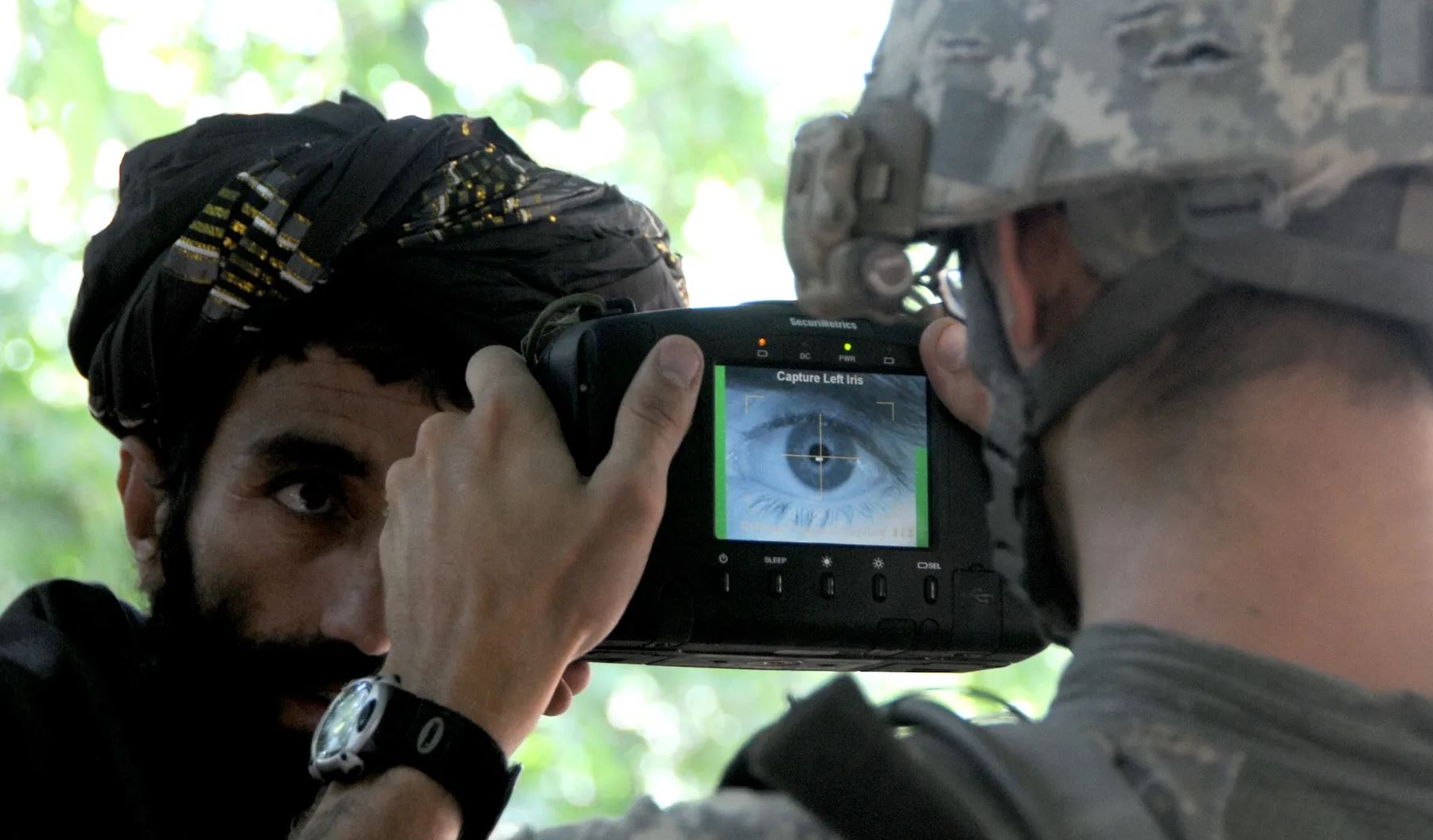 It is now amply demonstrated that Technocrat tools of total surveillance can be used for unspeakable evil. Afghans who were lured into surveillance systems by U.S. forces are now running for their lives as Taliban soldiers go house-to-house searching for people to kill. ⁃ Technocracy News & Trends Editor Patrick Wood
It is now amply demonstrated that Technocrat tools of total surveillance can be used for unspeakable evil. Afghans who were lured into surveillance systems by U.S. forces are now running for their lives as Taliban soldiers go house-to-house searching for people to kill. ⁃ Technocracy News & Trends Editor Patrick Wood
Thousands of Afghans struggling to ensure the physical safety of their families after the Taliban took control of the country have an additional worry: that biometric databases and their own digital history can be used to track and target them.
U.N. Secretary-General Antonio Guterres has warned of “chilling” curbs on human rights and violations against women and girls, and Amnesty International on Monday said thousands of Afghans – including academics, journalists and activists – were “at serious risk of Taliban reprisals”.
After years of a push to digitise databases in the country, and introduce digital identity cards and biometrics for voting, activists warn these technologies can be used to target and attack vulnerable groups.
“We understand that the Taliban is now likely to have access to various biometric databases and equipment in Afghanistan,” the Human Rights First group wrote on Twitter on Monday.
“This technology is likely to include access to a database with fingerprints and iris scans, and include facial recognition technology,” the group added.
The U.S.-based advocacy group quickly published a Farsi-language version of its guide on how to delete digital history – that it had produced last year for activists in Hong Kong – and also put together a manual on how to evade biometrics.
Tips to bypass facial recognition include looking down, wearing things to obscure facial features, or applying many layers of makeup, the guide said, although fingerprint and iris scans were difficult to bypass.
“With the data, it is much more difficult to hide, obfuscate your and your family’s identities, and the data can also be used to flesh out your contacts and network,” said Welton Chang, chief technology officer at Human Rights First.
It could also be used “to create a new class structure – job applicants would have their bio-data compared to the database, and jobs could be denied on the basis of having connections to the former government or security forces,” he added.
The most “dire circumstance” would be to use the data to target anyone who was involved in the previous government, or worked in an international non-profit, or was a human rights defender, he told the Thomson Reuters Foundation.
Door to Door
Even five years ago, the Taliban was using government biometric systems to target members of the security forces, checking their fingerprints against a database, according to local media reports.
On Monday, just hours after the militants rolled into the capital Kabul, there were fears that this was already happening.
“Taliban started door-to-door search” for government officials, former security forces members and those who worked for foreign non-profits, a Twitter user called Mustafa said on Monday, adding that journalists’ homes were also searched.
A Kabul resident said in a private message that she had heard of house-to-house inspections, and that the Islamist militants were using a “biometrics machine”.
Sourced from Technocracy News & Trends
Image: Wired
Become a Patron!
Or support us at SubscribeStar
Donate cryptocurrency HERE
Subscribe to Activist Post for truth, peace, and freedom news. Follow us on Telegram, SoMee, HIVE, Flote, Minds, MeWe, Twitter, Gab, Ruqqus , GETTR and What Really Happened.
Provide, Protect and Profit from what’s coming! Get a free issue of Counter Markets today.

Be the first to comment on "Fearing Taliban Purge, Afghan Citizens Scramble To Delete Digital History, Evade Biometrics"